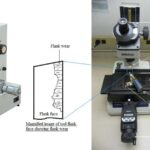IB Biology 49 Views 1 Answers
Sourav PanLv 9November 8, 2024
How do cis and trans isomers differ among unsaturated fatty acids?
How do cis and trans isomers differ among unsaturated fatty acids?
Please login to save the post
Please login to submit an answer.
Sourav PanLv 9May 15, 2025
Cis and trans isomers of unsaturated fatty acids differ in their molecular structure, physical properties, and health implications. Here’s a detailed comparison:
Structural Differences
- Cis Isomers:
- In cis fatty acids, the hydrogen atoms adjacent to the double bond are on the same side of the carbon chain. This configuration creates a kink or bend in the fatty acid, preventing tight packing.
- Example: Oleic acid (C18:1) is a common cis fatty acid.
- Trans Isomers:
- In trans fatty acids, the hydrogen atoms adjacent to the double bond are on opposite sides of the carbon chain. This results in a more linear structure, allowing for tighter packing similar to saturated fats.
- Example: Elaidic acid (C18:1) is a typical trans fatty acid.
Physical Properties
- Cis Fatty Acids:
- The kink in cis fatty acids contributes to lower melting points, making them typically liquid at room temperature. They are commonly found in natural oils and fats.
- Trans Fatty Acids:
- The straight structure of trans fatty acids allows them to be more solid at room temperature, resembling saturated fats. This property can lead to increased shelf stability in processed foods.
Health Implications
- Cis Fatty Acids:
- Generally considered heart-healthy, as they can help lower bad cholesterol (LDL) levels while raising good cholesterol (HDL) levels. They are prevalent in natural sources such as olive oil, avocados, and nuts.
- Trans Fatty Acids:
- Associated with negative health effects, including increased risk of heart disease. Trans fats can raise LDL cholesterol and lower HDL cholesterol levels. They are often found in partially hydrogenated oils used in processed foods.
Summary Table
| Property | Cis Fatty Acids | Trans Fatty Acids |
|---|---|---|
| Configuration | Hydrogens on the same side | Hydrogens on opposite sides |
| Structure | Bent/kinked | Linear |
| State at Room Temperature | Typically liquid | Typically solid |
| Common Sources | Natural oils (olive oil, nuts) | Processed foods (margarine, snacks) |
| Health Effects | Generally beneficial | Associated with increased heart disease risk |
0
0 likes
- Share on Facebook
- Share on Twitter
- Share on LinkedIn
0 found this helpful out of 0 votes
Helpful: 0%
Helpful: 0%
Was this page helpful?




